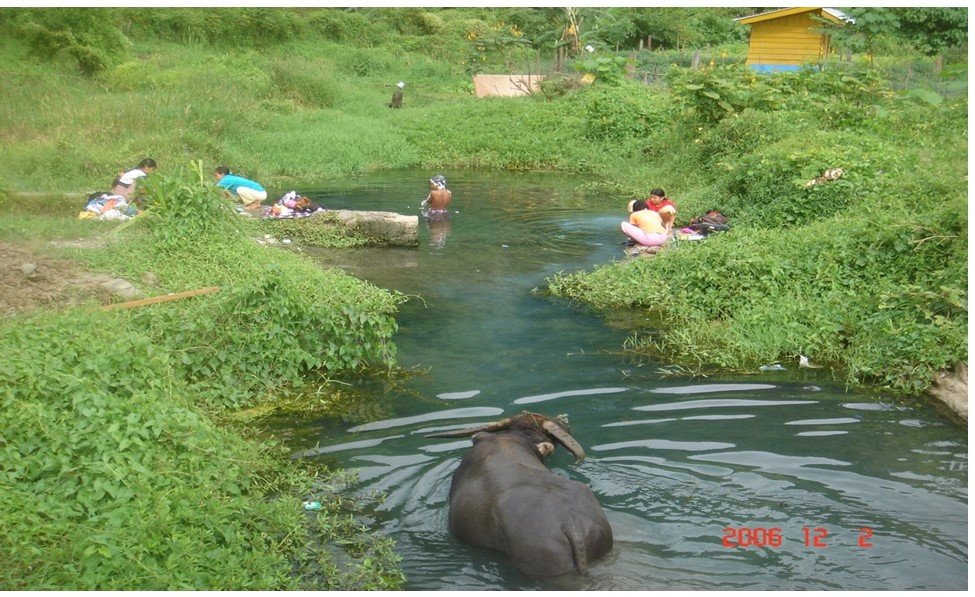
PARTICIPATORY MANAGEMENT HEALTH ENVIRONMENTAL
when we talk about the meanings of health environmental as we know, it depends on how we looked it. Environmental health can be interpreted human efforts to manage the environment in a way that the degree of human health can be improved.
Based on the above understanding can be interpreted that the scope of environmental health in general is:
- Provision of water, especially regarding the availability of the number and the quality of the water
- Management of used water and pollution of water management, including the problem of collecting, cleaning and disposal of used water from households and other waste water, and control of the quality of surface water and groundwater.
- food management and beverage
- The problems of housing and buildings
- The problems of animal as intermediary of disease
- Occupational health problems
The purpose of environmental health in accordance with the above understanding is the creation of a state of perfect in all the factors in the physical environment of man that can benefit human physical development, health and human life can be maintained and improved.
Healthy or not a person is depending on the presence or absence of a dynamic process, which is a reciprocal relationship of three factors, in which:
- environmental factors, namely factor that will cause a profound influence of grow up of various germs, such as ponding of water around the house that will become breeding grounds for mosquito larvae.
- The host, which is a dirty environment would be a media intermediary of the germs to be transmitted to healthy.
- germs, which is the source of the emergence of various diseases that result from an unhealthy environment.
These three factors above play an important role. To create the state of environmental health is good, then three relationships above must be broken.
From exposure above the environmental health issues, emerged because of two circumstances, namely:
- factors ignorance of the population, meaning due to limited knowledge about the scope of environmental health
- The presence of environmental factors if in terms of health is less favorable, such as the already polluted environment
Approach to community self-reliance in WATSAN (Water and Sanitation)
at several points of the scope of environmental health and other health supporting facilities (latrines, clean water supply, garbage, etc.), then the process of implementation more emphasis placed at the importance of supporting infrastructure of health facilities with
based on values:
- The value of cooperation
- The value of togetherness
- social values contained within the society.
Community involvement not only in planning and implementation alone but more pressed by principle-the principle of self-sufficiency in accordance with the values contained in the community, most of people think that self-reliance is money, but so many things can it do to smooth the development process, do not have to money, there are some examples of self-help that community which can done such as; - thought
- material, which is not only in terms of money, but also in the form of groceries
- power
The process of building and environmental health management based on participation
The stages in this development process is:
Preparation
The stages in the preparation process as follows
• Socialization to the community
• Readiness self
• Identification of data and the potential contained in the community
• Selection and location determination
• Establishment of a team or the building committee
• Monitoring
Planning
Stages in planning
• Survey joint technical committee
• Creation of design
• Preparation of budget
• The deal financing (subsidized and non-governmental)
• Determination of contributions in the form of material and energy
• Establish a plan of implementation
• Dissemination plans and agreements
• monitoring
Implementation
Stages in the implementation
• Collection of local materials
• Offer and the purchase of goods
• Construction execution
• Monitoring
Management
it needs good management and correct in the use and care. For that reason, it need to increase of public knowledge about environmental health, and health supporting facilities
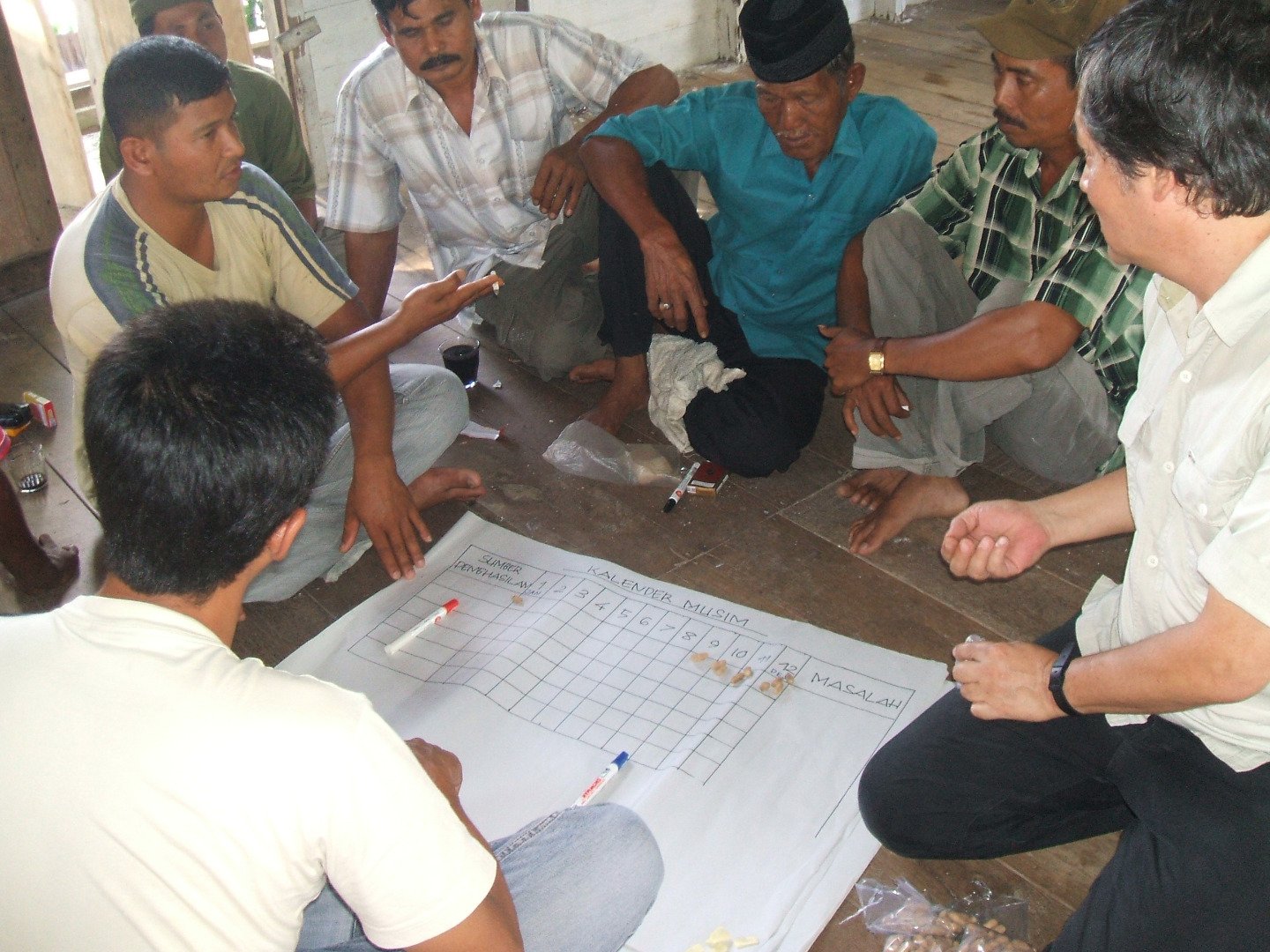

Discussion Process in Community
Use and maintenance latrine
Generally disposal of human waste mixed with water, the treatment of human waste are basically the same as the waste water treatment, therefore various techniques of wastewater treatment can be applied in the processing of human waste, as well as the requirements are need basically same as requirement for wastewater disposal.
Somewhat different is that the disposal of human waste known are latrines (WC) that is used by a man to let go of his business. As for the conditions to be met in building latrines, because this is very important for breaking the chain of proliferation of germs are:
- must be closed, in the sense that the building is protected from the view of others, protected from heat or rain, in everyday life, this requirement is fulfilled in the form of holding his own room for the toilet at home, or build a house latrine in the yard or a public place.
- Latrine location that does not interfere with the view, odorless, and do not become a place of life of various kinds of animals.
- latrine distance from the source of water in the sandy soil of at least 10 m, for latrine one source of water pollution, basically the absorption of water in sandy soils faster and look a bit low, while the ability of bacteria live only to a depth of 3 m , on solid ground solid of at least 7 m, because of water infiltration on solid ground is quite slow, and latrine position should be lower than the well, also in terms of aesthetics, latrine should not close to the source of the water used for purposes household, because it will cause the spreading of germs.
- The toilet has a hole which is then channeled through certain channels on a drainage pit or seepage wells, especially required when establishing a latrine with a container or seepage.
- provide a purifier (water or paper) enough, such that it may also soon be in use after discharge dirt.
the usage of latrine just as we use favorite objects, should be cleaning, so as not nesting animals or germs that could be a mediator of the disease, or the cause of the disease, the true usage of latrine is:
- use to relieve himself or dirt from the body
- after defecation or small, wash with water to clean, without any more scars
- it should provide soap, which serves to wash hands after defecation or small
- at least one time a week, latrine should be cleaned, preferably using carbolic acid, to kill germs that might be a place of live.

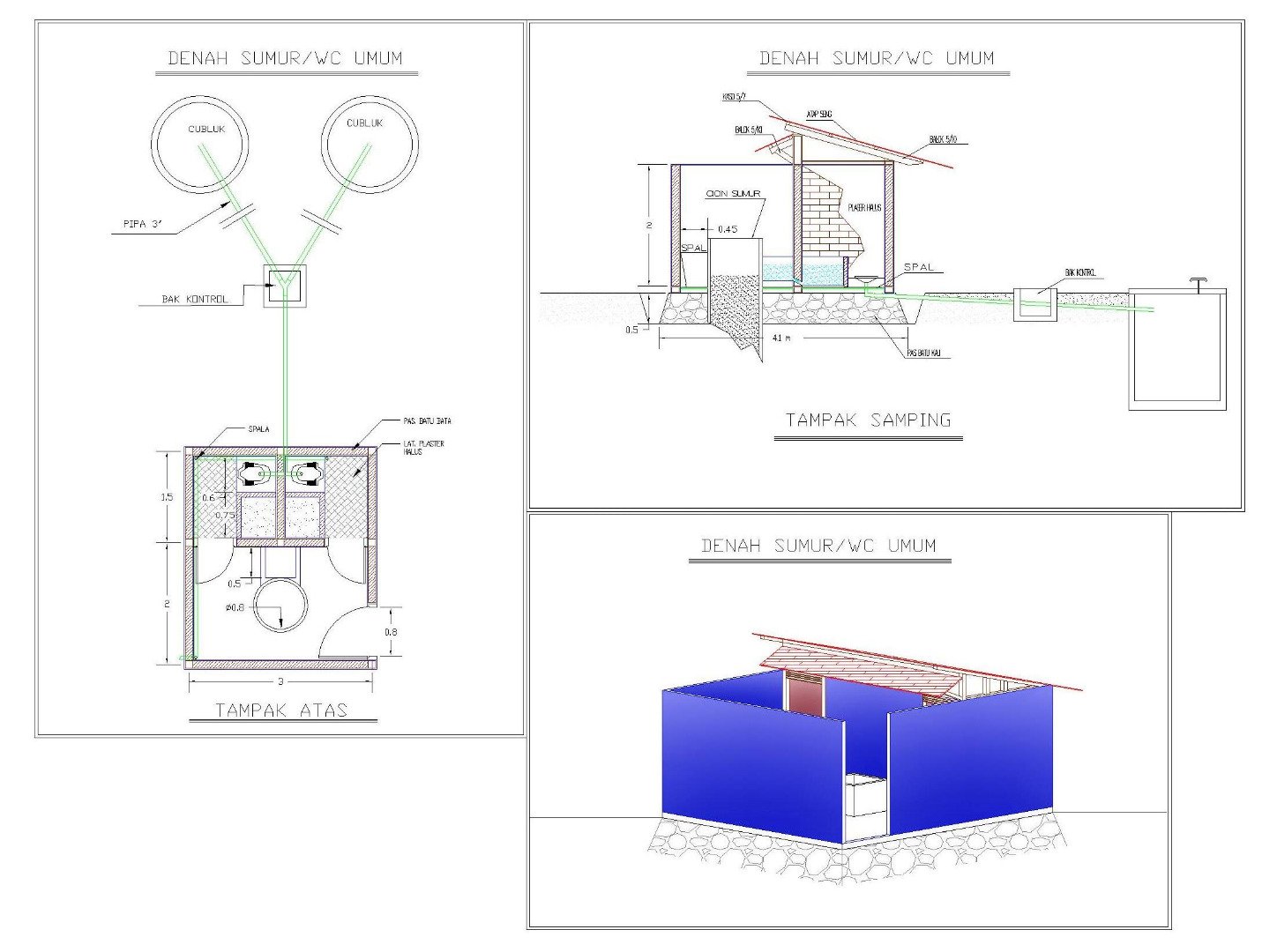
- sketch of latrine in community
well maintenance as a source of household water
water is vital to life, is not a new thing, because we know that none of life that exists in this world can be occurred on without the availability of adequate water. For humans, the need for this water is very absolute, because the substance forming the human body consists mostly of water, which account for about 73% of the parts of the body.
it is a basic thing to find out the kinds of water sources, when we talking about water, surely it has relation to health, there is variety of water associated with the source or provenance, and it can be distinguished on:
- rain, dew or snow which contained water from the sky
- ground water, such as lakes, rivers, and sea water, water from shallow wells, are also water the soil surface;
- The water in the soil, the ground water that seeped into the soil, so it has undergone filtering by soil or rocks, once upon a time it will up be surface water, by use the water flowing to the sea.
In terms of health, the three kinds of water are not always meet the health requirements and likely to have been contaminated because it is in the open position. the requirements for drinking water are:
- Physical Requirements
Physical requirement of water is a requirement that simple, because in daily practice often encountered water we might consider it clean, it was already contaminated when viewed in terms of health. In terms of health is immediately understandable, if one of the physical condition is not met, it is likely that the water is not healthy, because some chemicals or bacteria present in the water can change the color, smell and taste. - Terms of bacteriological
Theoretically all drinking water should be protected from contamination by bacteria, but in their daily lives, very difficult to determine whether the water is really pure from bacteria or not. Therefore, to gauge whether drinking water is free of bacteria that is used is free of bacteria E Coli. E Coli were used as the main criterion for determining eligible drinking water bacteriological or not, in general these germs found in human feces. - Conditions for chemistry
Good drinking water is water that is not excessively polluted by chemicals, especially chemicals that are harmful to health. Furthermore, are also expected to substances or chemicals found in drinking water, does not cause damage to the storage area.
One example of a disease that can be caused by contaminated water or food is a diarrheal disease, for first aid when children or other family members suffering from diarrhea, should take immediate action to put diarrhea management principles, namely:
- give ORS immediately
- give drink more than usual
- provide meal as usual
if they have not stopped immediately brought to the medical personnel, for further testing.
Dig well is the most widely used alternative in the villages, as a source of drinking water for the household, in addition to the water springs. Same as above when we build wells there are several health requirements that must be considered, among others,
- The walls of the well 3 m upper part of the wall must be made impermeable to water, so that the surface of the water seepage that has polluted not the case, a depth of 3 m was taken because the bacteria are generally not able to live longer at that depth.
- approximately one half the next down, the wall is made of a wall that is not cemented, aim more to prevent the collapse of the soil.
- The bottom of the well by gravel that is not cloudy
- The above-ground made wall about - about 1 meter, so that the surrounding water does not descend into the well, as well as the safety of the wearer.
- The soil around the walls and cemented wells on land sloped edges created by the channel, the width of the floor around the well is approximately one and a half meter, so that surface water does not enter
- wells were given a bucket to be hung after use and do not put on the floor
- As note it’s Very important to do not put the well near to sources of pollution, such as toilet or corral. If located near pollution sources then gradually, germs will take advantage of these wells. its will be a proliferation of germs
maybe we would find the conditions above, but there is no guarantee that the water is in accordance with the health requirements, therefore the water for domestic purposes it needs to be processed, by making a sieve, and after it was boiled.
wells are used as a means for household purposes should continue to be treated, if it was not keeping it cleanliness well, it will pose a danger to the health of the wearer, well maintenance in the following manner:
- Draining wells that recently complete, until the water is clean and odorless
- clean the walls of the well, which was done 3-6 months, to remove impurities that stick, the development of seedling diseases
- draining mud every two months if there is silting
- note the floor cleanliness which could lead to a crash, and the disposal of waste water that could make a bad odor
- patchwork floor of the well, the well wall, damaged sewer
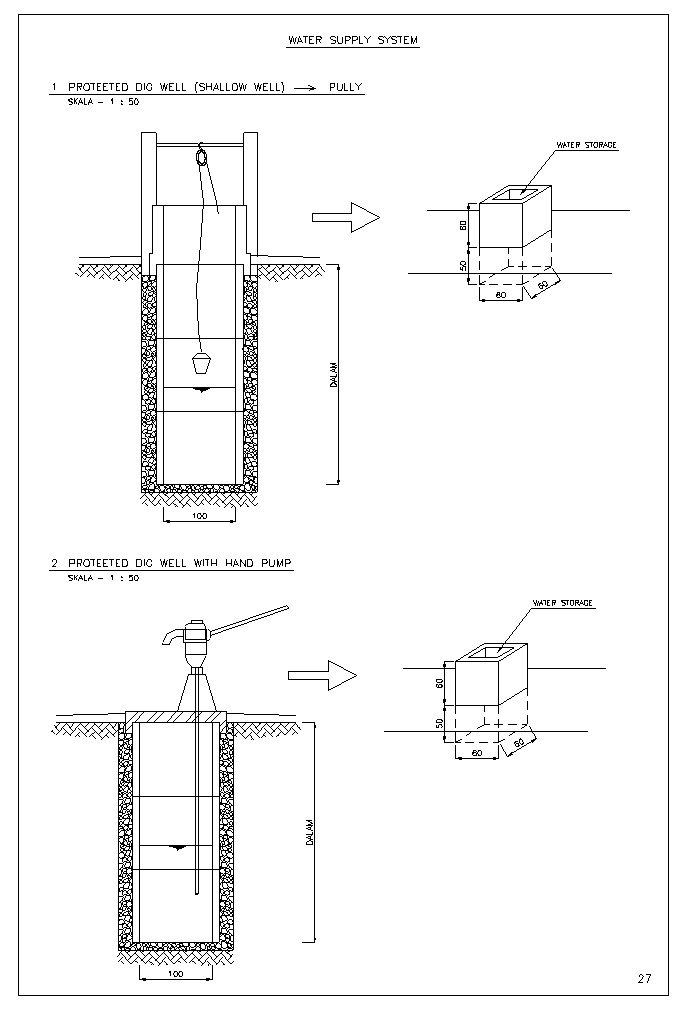
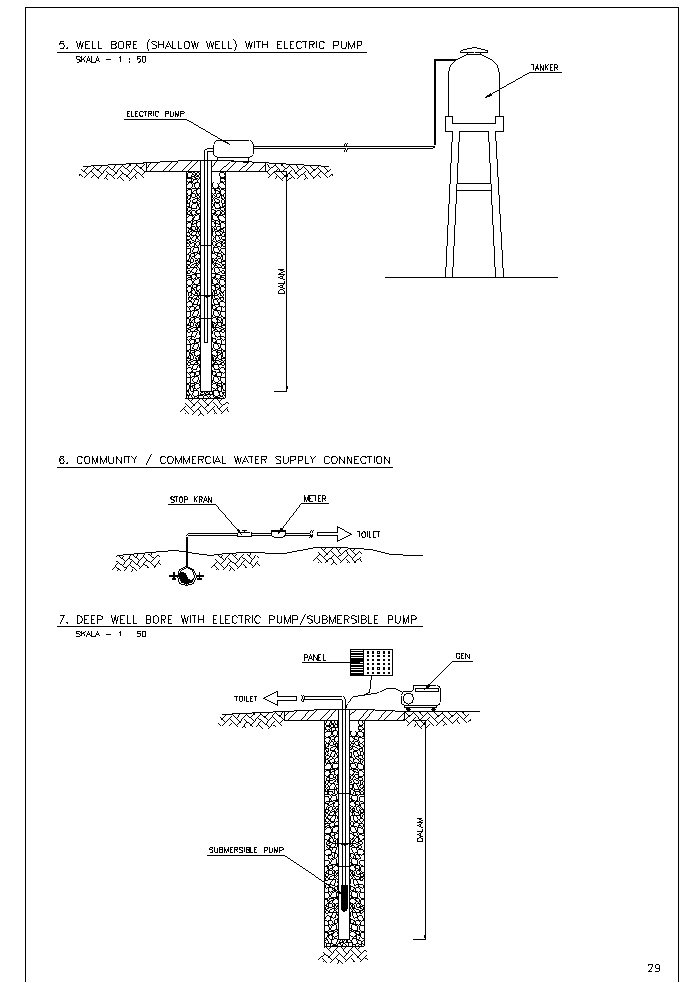
sketch of well in community

Fresh water storage for community
Waste management
To establish a human life requires a variety of things that are generally derived from nature or from the environment that would eventually lead to the remainder after exploited the so-called trash. Garbage in environmental health sciences only a subset of objects or things that are seen are not used, disliked, or should be discarded in such a way so as not to disturb of the life.
Sources and types of garbage depending on the level of advancement of people's lives, sources and different kinds of waste. In generally it can be concluded that the more advanced cultural level of society, eating too complex sources and kinds of rubbish encountered. In everyday life, known to some source of waste, for example,
- from households
- from residential areas
- from the trade area
- from industrial areas
- from local farms
- from the agricultural area
- from the mining area
- from the street and so forth
Trash - waste can be divided from its properties, namely:
- perishable garbage
- waste that is not easily rot
- combustible trash
- Federally combustible trash
A waste management would be good if the waste does not become a breeding ground for germs, as well as the waste does not become a media intermediary extent of a disease spreader. Other requirements that must be fulfilled for waste management is not pollute the air, water or soil, odorless and so forth.
In environmental health management, there are three main points in waste management, it is namely:
- storage bins
- garbage collection
- landfills, thereto included transporting waste and garbage extermination at once anyway.
Storage bins
Storage bins are bins meanwhile, before the waste is collected, then transported and disposed of (destroyed). Clearly, it is indispensable to provide a dumpster, which typically encountered household, office, place - and other public places.
Of course, in temporary storage bins, the bins should be provided for different kinds or types of waste. Ideally wet garbage should be collected along with the garbage, as well as dry waste, garbage flammable, combustible garbage and so forth, should be placed separately. The purpose of the separation of waste storage is to facilitate their destruction later
The storage that recommended are:
a. strong frame, so it is not easy to leak, it is important to prevent garbage spilling
b. its has lid, but the lid was made such that it is easy to open, empty it contents, and cleaned
c. size bins such that it easily lifted by one person.
Bins are used for storing this waste are manifold. Used in the countries that have advanced plastic paper, or thick paper. While in Indonesia, which is prevalent, plastic baskets, wicker and so forth.
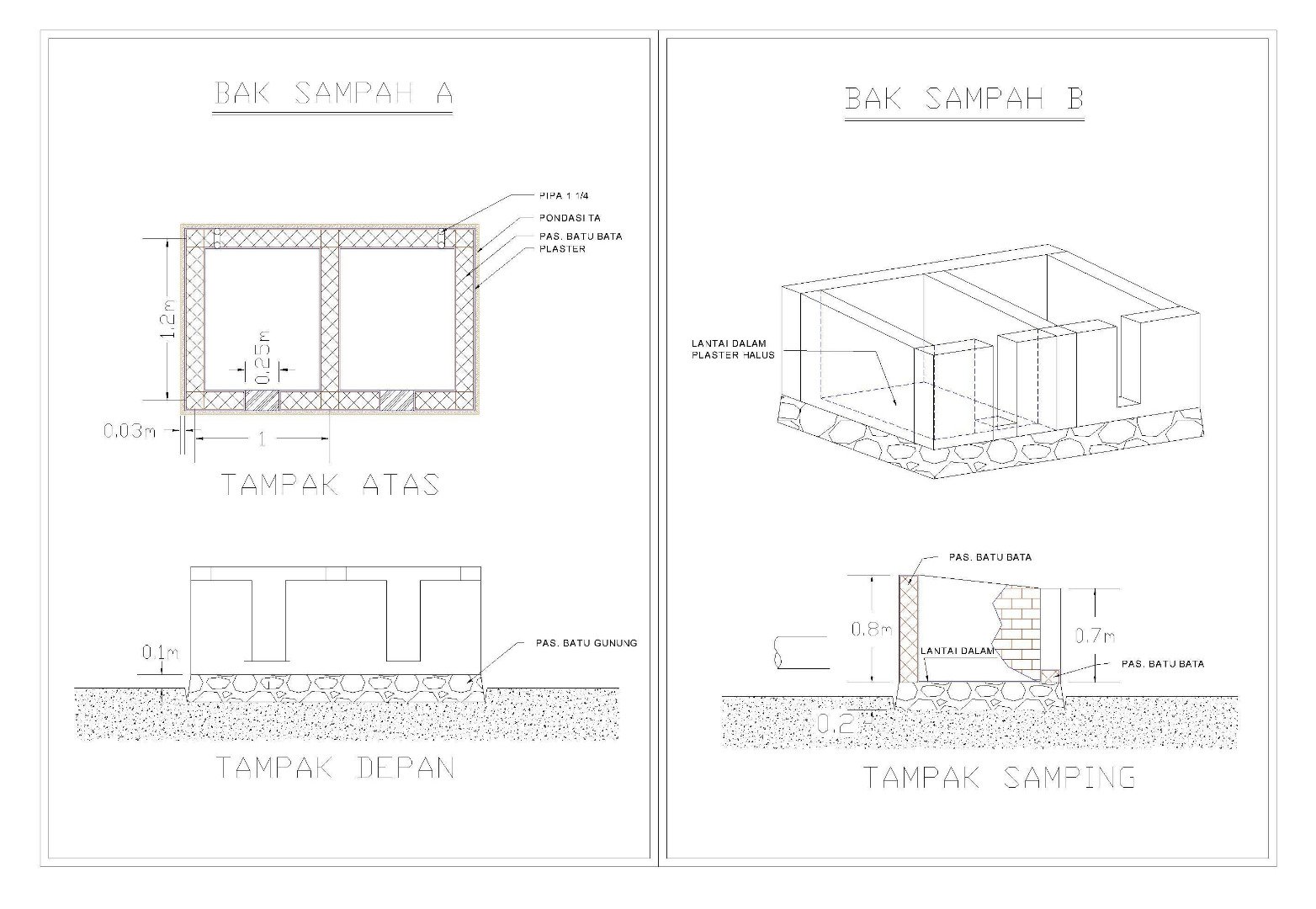
sketch of bins storage in community
garbage collection
Trash that is temporarily stored at home, the office and so forth, of course subsequently collected, then transported and disposed of or destroyed. Because the amount of garbage collected large enough, it is necessary to build a temporary garbage collection before being discarded or destroyed. Typically handling garbage issue is being undertaken by the government or by the community or they worked together.
This waste collection must also meet health requirements, recommended requirements are:
• Built on slightly higher ground, to avoid the puddles surrounding
• the Construction must be strong, so it is not easy to leak, it is important to prevent garbage spilling
• its have a door or lid, but the door or lid that is made so easily opened, emptied its contents, and cleaned trash indoors.
• Do not dwelling flies and mice
• The place was easily reached, both by the people who will use the vehicle or by a waste hauler if any.
Similarly, storage bins, then in this garbage collection, should also be made of separation. For that there are two kinds:
- duet system, means are provided two bins one for wet garbage and the other for dry waste
- trio system, which provided three bins, a first for wet waste and dry waste are second to easily burned and a third for dry waste are not easily burned (glass, cans, etc.)
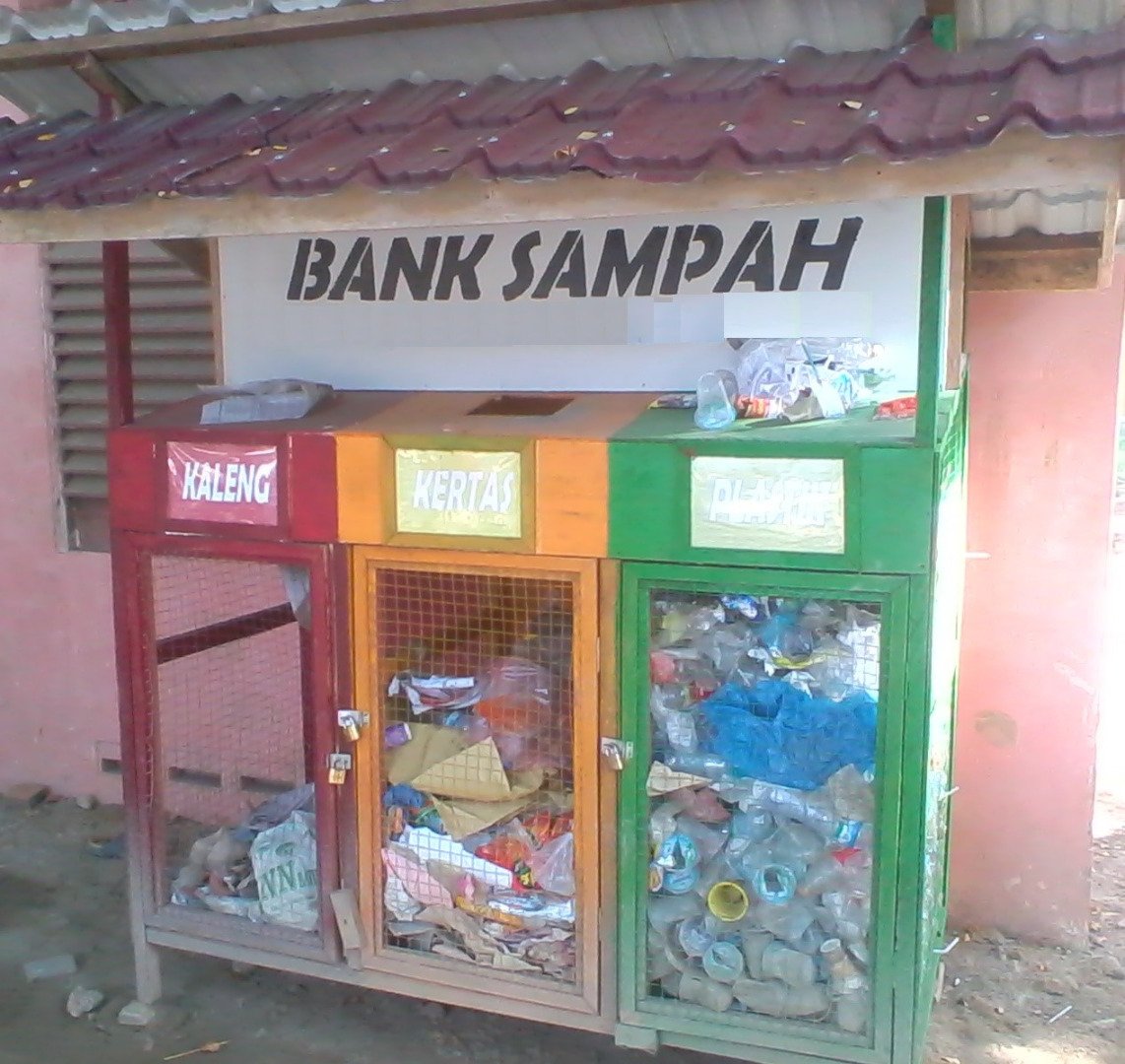
bank of bins for garbage collection
Waste disposal and destruction
Trash that has been collected would remove to be destroyed. Destruction is the final stage should be done with the garbage.
Garbage disposal usually done certain areas, are such that it does not disturb the health of humans, the condition that must be met are:
a. The place was built not as close to the source of drinking water or other sources of water used by humans
b. not in places affected by floods
c. in places far away from human habitation.
household waste
Because water is used for various purposes such as bathing, washing, cleaning all sorts of tools, and so forth, the water will experience a variety of pollution. Simply put, water that has been polluted (waste water or used water) can be discharged to the nature, that is removed from human life. But if this is done, the dirty water will pollute the environment, and in turn this situation will complicate human life itself, such as impaired health, and so forth. In these circumstances, it must find a way out.
What is meant by the waste water is not clean waters containing various substances that are dangerous to human life or animal, commonly arise because of human activity (including industrial). In everyday life, sources of waste water are commonly known are:
- coming from households, water from showers, washing water
- coming from the company, for example, from hotel, restaurant and swimming pool
- comes from industries, such as ink and paint factory
- coming from other sources, such as rainwater mixed with sewage, and so forth.
Water discharged without treated is usually done by households. There are two common ways that usually be done, namely:
- sewage systems or so-called gutter
this is a network of sewage disposal starting from the residential area, entrance stricken settlements, and then passed through the place of final disposal of waste water, once upon a time, this system is quite good, as long as it not clogged, and landfills are not used for water drink. - septic tank system or catchment wells
is a storage unit and sewerage (and also human excrement) in which is made permanent.
Both systems are very well that used in residential areas, so as not to contaminate the environment and the breeding of germ.
How to motivate the target groups to carry out activities of environmental health (WATSAN)
In motivating the target groups demanded a greater role on the team village that has been formed, because the village team who knew more about the character of the local community. how to motivate target groups that will be carried out by a team of village gives understanding to the community will be understanding of the importance of health, the dangers that would arise if the environment being place to grownup of germs, and the need for self-reliance in the development process, which will break the dependency properties that nowadays high enough in the community.
The strategy that we can do to motivate the target groups to actively participate in the implementation of development activities such
- Providing confidence in the public that they will be able to establish themselves and their group according to their potential.
- Providing greater opportunities to the community through the institutions established by them in order to play an active role in the process from the planning through to managing for development results.
- Provide training to improve their knowledge and skills, gradual and planned.
- Provide feedback to each process activity they have done.
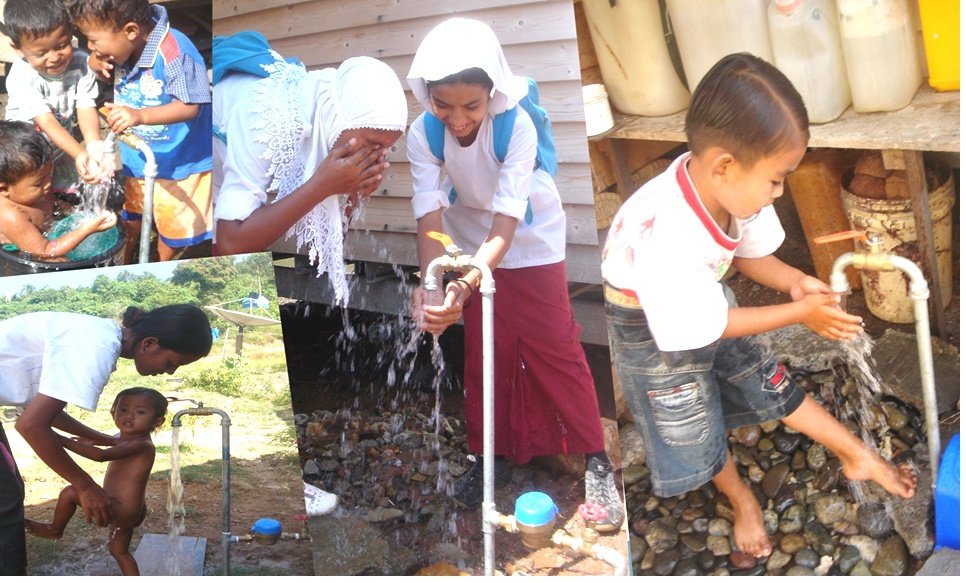
Image by author
May be useful
Thanks For Reading.
Follow Me @cekmust
